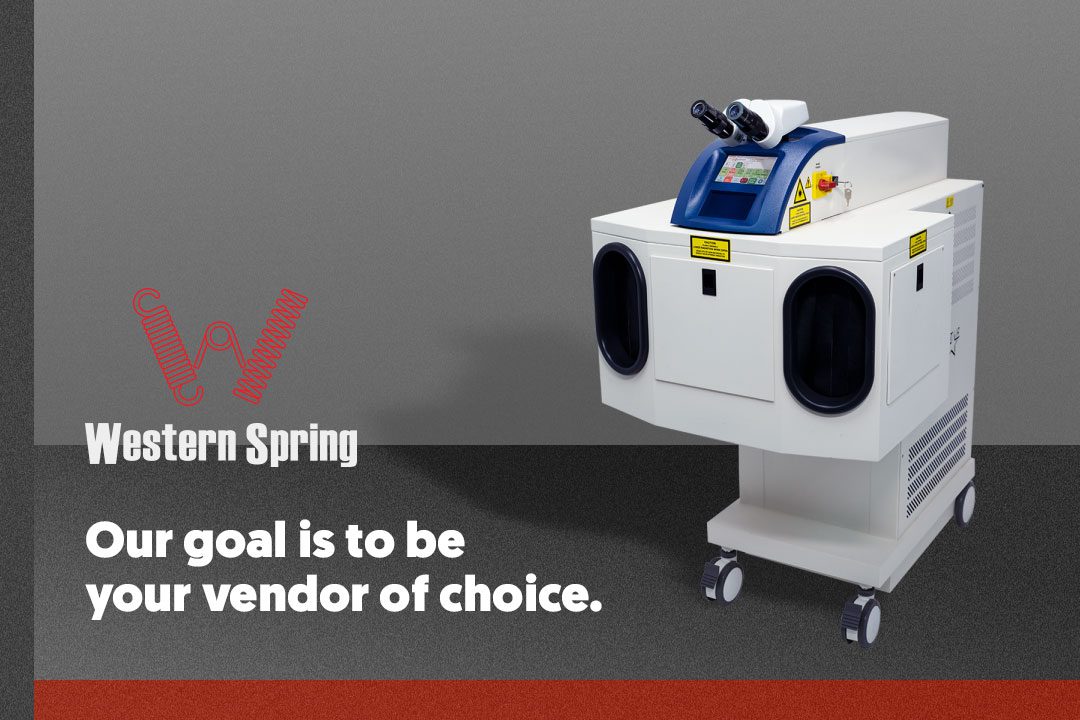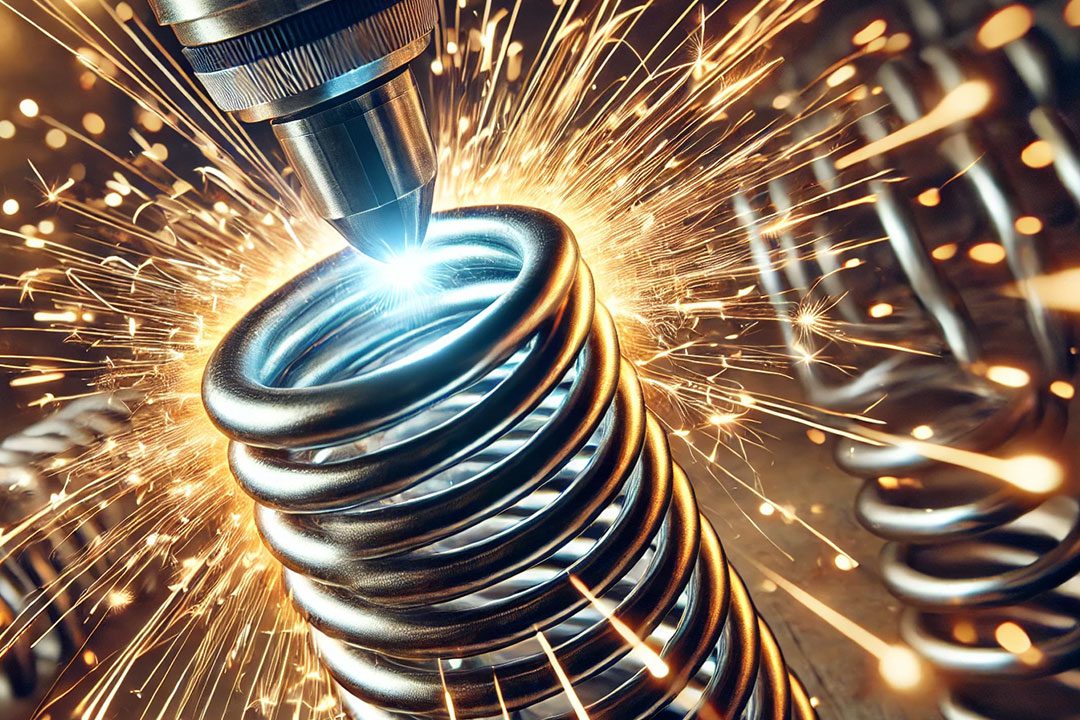Laser welding is a high-accuracy joining process that uses a concentrated laser beam to fuse metal components.
At Western Spring, we utilize industrial laser welding to create strong, reliable welds with minimal heat distortion.
This process allows for precise metal joining, reducing the risk of warping or material damage. Additionally, laser welding makes it possible to fuse dissimilar metals and varying thicknesses, making it a versatile solution for advanced manufacturing needs.
Learn more about our advanced manufacturing techniques in The Art of Crafting Coil Springs and Wire Forms.
Key Characteristics of Laser Welding
- High Accuracy: Enables detailed welds for small or complex components.
- Minimal Heat Input: Reduces warping and preserves material properties.
- Strong, Durable Welds: Enhances performance for high-stress applications.
- Versatile Metal Compatibility: Joins dissimilar metals with varying thicknesses.
Why Laser Welding is Used in Spring Manufacturing
Laser welding is ideal for joining springs and wire forms while maintaining their structural integrity. It is particularly beneficial for applications requiring:
- Minimal Distortion: Reduces heat exposure, preventing warping and preserving spring elasticity.
- Strong, Reliable Welds: Creates durable joints that withstand repeated stress cycles in aerospace, automotive, and industrial environments.
- Secure Connections for Complex Designs: Enables precise welding of intricate shapes, thin wires, and multi-metal components without compromising strength.
- Clean, Contaminant-Free Welds: Produces oxidation-free joints, making it suitable for medical implants, surgical tools, and aerospace applications.
Spring and Wire Form Applications
Laser welding is widely used in spring and wire form manufacturing to enhance structural integrity and longevity. Applications include:
Compression Springs
- Compression Springs benefit from laser welding in high-load environments, ensuring secure joints that improve force distribution and durability.
Torsion Springs
- Torsion Springs rely on laser welding to maintain torque strength and structural stability in automotive, aerospace, and mechanical applications.
Extension Springs
- Extension Springs require secure welds to prevent failure in tension-based systems such as braking mechanisms and aerospace components.
Flat Springs
- Flat Springs benefit from laser welding to maintain smooth, durable edges, making them ideal for electronics, medical tools, and industrial assemblies.
Wire Forms
- Wire Forms utilize laser welding for secure, long-lasting connections in custom industrial components, electrical contacts, and surgical tools.

Advantages and Limitations of Laser Welding
Advantages
- Strong and Clean Welds: Produces smooth, high-strength joints without requiring additional filler material.
- Minimal Heat-Affected Zone: Prevents warping and preserves the original properties of the welded material.
- Corrosion Resistance: Creates oxidation-free welds, improving durability in harsh environments.
Limitations
- Alignment Sensitivity: Requires precise positioning to ensure proper fusion, often needing automation.
- Material Reflectivity: Highly reflective metals, such as aluminum, may need specialized laser settings for effective welding.
- Higher Equipment Cost: Laser welding systems require a larger initial investment compared to conventional welding methods.


